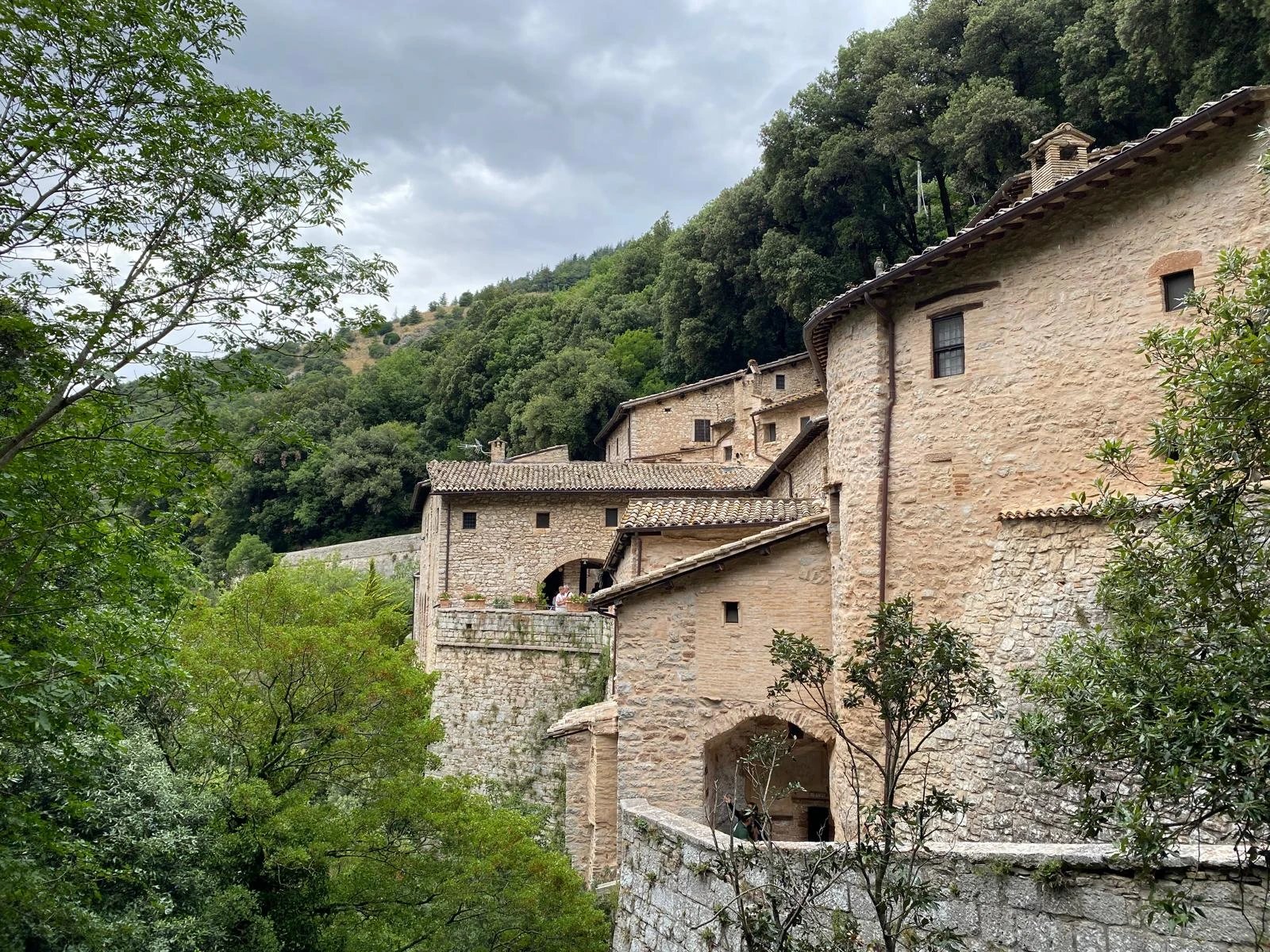Assisi, Italy, Jul 27, 2025 /
07:00 am
Everyone knows the Basilica of St. Francis in Assisi, the burial place of the founder of the Franciscan order, as well as the basilica housing the Portiuncula. But few know the Eremo delle Carceri, a hermitage hidden in the mountains, surrounded by trees — a place of silence where the “Poverello” himself withdrew to pray.

In every season, an unending crowd throngs the majestic entrances of the Upper and Lower Basilicas in Assisi in the Umbrian region of Italy. Thousands of tourists tread the cobblestones of the medieval town with its pale stone façades. Meanwhile, just five kilometers (3.1 miles) from the center, high above the town, the atmosphere is entirely different: Here, silence and solitude reign. This is what Francis and his companions sought in the early 13th century.
At the end of a winding climb, on the slopes of Mount Subasio at an altitude of about 800 meters (about 2,625 feet), the first Franciscan friar erected a small hermitage nestled in the greenery. In this sacred place, there are still no car horns, no souvenir vendors, no restaurants — only birdsong welcoming the souls who come to pray.

In the 15th century, St. Bernardino of Siena carved out a convent on what had been Francis’ retreat from the world’s noise. Thus, the original refuge created by Francis grew room by room, becoming a multilevel monastery — yet still marked by rusticity and austerity.
In the entrance cloister, pilgrims can see the “Well of Francis,” which marks the spot where water is said to have sprung forth following a miracle of Francis. They can then step into a small room that served as the monks’ refectory, with its simple long table and unadorned wooden benches. Continuing along the path, visitors encounter the same simplicity in the tiny choir, where barely 10 people can fit into the narrow wooden stalls.

A bed of stones
In this hermitage, whose windows open onto the forest, everything points to humility. The doorways and openings are so small that one must bow to enter, to make oneself small. The path continues through narrow stairways carved into the rock, forming a labyrinth dotted with skylights, descending deeper into the mountain until it reaches the Cave of St. Francis (grotta di San Francesco), the heart of the convent.
Here, the founder of the Franciscans would retreat, spending his nights alone in meditation with God. Behind a wooden railing, one can lean over and see his unusual “bed” — no sheets, no frame, not even a mattress. The “Poverello” of Assisi lay on the hard, gray stone, a further sign of the renunciation and mortification he embraced.

Next to the saint’s cave is a tiny oratory where the friars of the early community prayed. Francis was not the only one seeking a life of sacrifice. Above the convent, in the forest, you can still find the caves of other brothers, such as Ruffino and Leo.

The oak that heard Francis
Though nature has changed over the past 800 years and countless seasons have passed, there remains in the shade of the convent on the mountainside a tree from the time of St. Francis. This oak, authenticated as medieval, now bears a trunk twisted by centuries, yet its bark still bears silent witness to the preaching of Italy’s patron saint to the birds, as the legend goes.
(Story continues below)
Subscribe to our daily newsletter
Near this centuries-old tree, three statues commemorate St. Francis’ special love for nature. One shows the saint lying on his back, hands behind his head, gazing at the stars — an attitude that reflects his famous “Canticle of the Creatures,” in which Francis sang: “Praised be you, my Lord, for our sister the moon and the stars. In the heavens you have formed them, bright, precious, and beautiful!”

Just a few steps away, two early Franciscan friars, Leo and Juniper, are depicted. Leo, the elder, traces the Big and Little Dipper on the ground, measuring their distance between thumb and forefinger to calculate the position of the North Star. The young Juniper points to the same star with wonder.
The duo symbolizes the harmony between faith and reason, and the North Star — “a sure guide to finding the right direction” — symbolizes the Gospel, “which unfailingly guides those who follow it,” a sign at the monastery explains.





